-
Genealogy & Names
-
Tourist Information
-
Culture & Reference
1798 Rebellion
Dermot, Strongbow and the Invasion of Ireland
The Titanic and Ireland
The Vikings in Ireland
The Ancient Ogham language
Padraig Pearse
Countess Markievicz
Saint Patrick
Saint Brigid
Robert Emmet
Kevin Barry
Michael Collins
Eamon deValera
Sean Lemass
Daniel O'Connell
Charles Stewart Parnell
Wolfe Tone
Brian Boru
Grace O'Malley
James Connolly
Irish Stamps
CHRISTMAS GIFTS FROM IRELAND - VISIT IrishNation.com Only 358 Days To Go! |
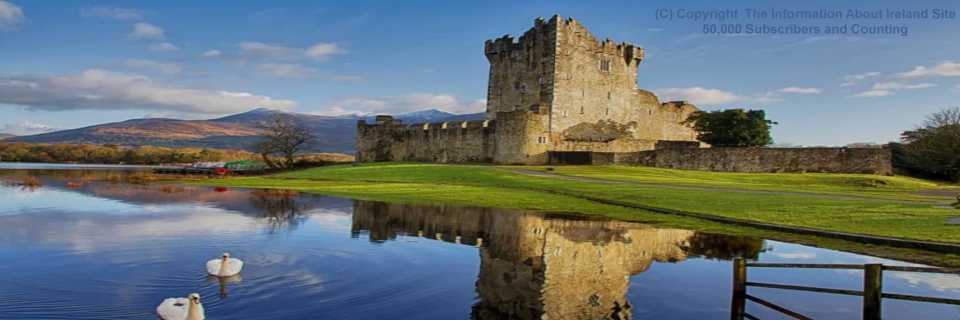
|
IN THIS ISSUE

One the one hand a 'soft Brexit' with a deal in place and an orderly transition may have relatively minimal effects for Ireland. On the other hand a 'hard crash-out no-deal' Brexit may have severe economic effects and historic political side-effects including the possibility of a United Ireland! However unlikely that last outcome is, it is clear that nobody knows for certain just what the immediate future holds. This month we have an exploration of seven little-known characters from Irish history and two fine tales from Mattie Lennon for you to enjoy. If you have an article or story you would like to share then please do send it in. Until next time, Michael 
P.S. Please Do Forward this Newsletter to a friend or relative. If you have a website or Facebook page or Blog (or whatever!) then you can help us out by putting a link on it to our website: www.ireland-information.com
|
||||||||||||||||||||||||


find out more |

OPINION: BREXIT CHAOS MAY INVOKE A NEW EU BETRAYAL The latest proposals put forward by the UK Government to its own Parliament have again been rejected in a devastating blow to the plans by British Prime Minister Theresa May to finally get the Brexit deal over the line. 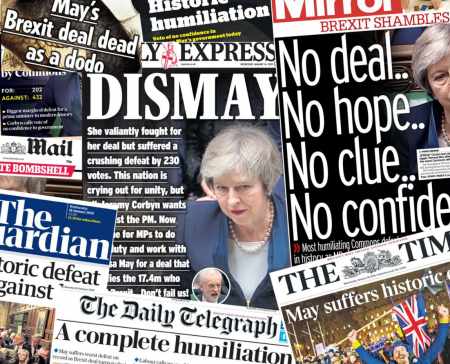
The decision by the British voters to leave the European Union is now a matter of urgency as the deadline to leave is March 29th. The British and EU negotiators have agreed a deal that would allow for a relatively orderly exit by the British from the European Union but the big problem is the border in Ulster. The six partitioned Counties in the north of Ireland represent the main border that the EU will have with Britain after Brexit. The issue is complicated by the fact that Ireland and the UK have already negotiated the removal of the physical border in Ulster as part of the 'Good Friday Agreement' that saw an end to paramilitary violence in the North and a period of relative peace and co-operation between Unionists and Irish Republicans. All of this is now in mortal peril as, if there is a hard 'no-deal' Brexit then the likelihood is that a physical hard border, possibly backed up by British army troops, would again be reimposed. The consequences for such an action are hard to fathom but would almost certainly be disastrous. Thus far the EU have stood by the Irish Government position that no deal is possible without a 'Backstop' being implemented. The Backstop is a means to allow the British to leave the EU but only by agreeing to not impose a hard border in Ulster, with this arrangement being a temporary measure until a full trade deal is agreed. It is this 'Backstop' measure that has so infuriated so many Conservative members of Parliament in Westminster as well as the ten Unionists who prop up Theresa May's minority Government. So the clock is ticking and the closer we approach the deadline the more the EU will focus on what it is they could lose. It is unclear if the EU will be willing to allow the British to crash out, given the economic consequences, with suspicions building that the EU may sacrifice their previous stance regarding the Backstop in order to preserve valuable economic links with Britain. This scenario is not at all out of the question and a review of recent history gives it credence. When the financial crash occurred in Ireland in 2008 the EU was very quick to impose its will on the Irish Government, bullying it into accepting a financial rescue package only on condition that the Irish repay the French and German bond-holders who were severely exposed to the Irish property crash. This was naked blackmail. The result was a series of loans amounting to 64.6 Billion Euro that the Irish taxpayers (and their children) will be repaying for the next four decades. The suggestion therefore that there is any sense of 'community' within the European Union is laughable. Simply put, if the EU sees that their own finances are being significantly affected then they would quickly throw Ireland to the wolves and stand by while the Northern Ireland Peace Process is wrecked and a hard border imposed. And that would be a second betrayal. ABORTION CLINICS TARGETED BY PROTESTERS The 2018 referendum that allowed for the introduction of abortion services in Ireland was passed by a margin of 66.40% to 33.60%. The referendum campaign was a very divisive one in Ireland and despite the outcome of the vote, has not seen an end to protests. 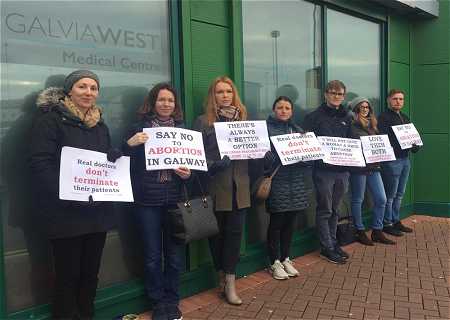
The campaign to remove abortion services in Ireland, (ie those who voted against the referendum) has begun to picket abortion clinics that have only just started offering services to women. One health clinic in Graiguenamanagh in Kilkenny has been subjected to both a picket and to nuisance phone-calls from protesters. Other pickets have been launched in Galway and Drogheda. The Government is considering new laws to prevent such pickets and protests taking place in such proximity to health centres and doctors premises. |

FIND YOUR NAME IN OUR GALLERY OF IRISH COATS OF ARMS

|

by Mattie Lennon It has been said that every editor should have a brother who is a pimp. To give him (the editor that is) somebody to look up to. Should every censor have a similar sibling? World Day Against Cyber censorship is celebrated every year on March 12th. Should there be a world Day against the other sort of censors? My namesake, the critic Michael Lennon wrote that Ulysses was,' . Not so much pornographic as physically unclean......' I am not in a position to agree with or contradict him. Because despite numerous attempts over the years I have not yet got to the final 'Yes I said yes I will yes.' Of course contrary to popular belief Ulysses wasn't ever officially banned in Ireland so ninety-six years after its publication I can't blame the censor for my lack of erudition in that area. 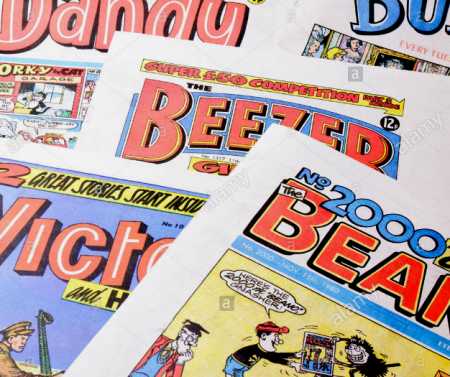
However, though I am reluctant to use the word 'victim', for more than three score years I have been a soft touch for 'censors' of various hues. Although in most cases I took Sam Goldwyn's advice to, 'Don't even ignore them.' As a bus inspector I once submitted a report on a complaint from an irate passenger. I had transcribed, verbatim, his complaint which included many expletives, known in polite society as 'the vernacular of the soldier.' My Divisional Manager asked me to change the wording, explaining, 'I can't ask the girls to type that.' As a fifteen year old, due to strict parental supervision, I was obliged to devour the exploits of The Ginger Man, Sebastian Balfe Dangerfield and his fantasies about Miss Frost, , in the semi-darkness of the cow-house in remote west Wicklow. While 'the shelves of Patrick Kavanagh's library' were the hedges of his small farm at Shankaduff my book depositary was the wall-plates of a thatched byre which lacked diurnal illumination By the time I got my hands on 'Goodbye to the Hill' a neighbour had moved out, his cottage was empty and I could savour the carryings on of Paddy Maguire around Ranelagh and Rathmines in relative comfort. It has been said that if you want something to last for ever you should either carve it in stone or write a song about it. Although I grew up within spitting distance of Ballyknockan granite quarries I am no stone-cutter. But I did on occasions make a feeble effort to record local happening in ill metred verse. Court cases were threatened more than once but , sadly, didn't materialise . And before you ask.... I haven't ever been prosecuted under the Obscene Publications act. My verbosity didn't escape censure either. My olfactory organ, you will have noticed, has a Grecian bend. And what, you may well ask ,has that got to do with censors? I didn't acquire my nasal fracture through walking into a wall, falling down, or being hit accidently. No. It happened in Blessington fifty-five years ago when a civic-minded man, head-butted me on the grounds that I had been using un- parliamentary language in the company of females. The ultimate in censorship I think you will agree. When my one-act Play, 'A Wolf by the Ears' was staged by an amateur drama group in Kildare the producer removed just one line. 'In case there would be somebody sinsitive in the hall', he said. I have no way of knowing when I will be finished with censors but I know when it started. I was eight years old and it was 1954. The year that Sean O Faolain was commenting on the powers that were and their criticism of crossroad, dancing V-necks, silk stockings and late dances. To this list of debauchery was added mixed bathing and advertisements for female underwear. And either close dancing or bikinis was a passport to Hell. One Sunday my mother arrived home from first Mass with news. The curate, in a stentorian voice only a few decibels below that of a Redemptorist Missioner had warned the congregation against 'turning over the pages of the rags of Fleet Street.' Despite her less than perfect eyesight my poor mother managed the decipher the small print on the back pages of my Beano and Dandy which showed that they were printed at D. C. Thompson's outpost in Fleet Street. Dennis the Menace and The Bash Street Kids weren't actually banned from the house but my father reckoned it was 'the thin end of the wedge.' My parents were unanimous in their belief that the relatively young Curate was well qualified to set the moral compass for the youth of west Wicklow. And why wouldn't he; wasn't his father a Guard in Bray? |

DANIEL MALCOLM AND HIS BULLET-RIDDLED GRAVESTONE Captain Daniel Malcolm was a Merchant of Irish descent prior to the America Revolution. He had settled in Boston and embarked on a career of tax-evasion, among other activities. He was renowned for hating the British regime of taxation ('without representation') that would eventually spark the American War of Independence. He died just prior to the Battle of Bunker Hill in 1769 but his defiance did not end there. 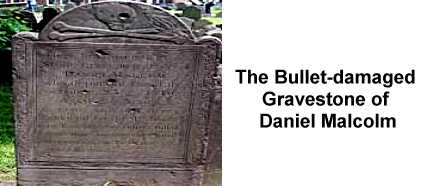
Malcolm had insisted that his gravestone record his opposition to the unfair taxation imposed by the faraway British. When the graveyard was occupied by British Troops just prior to the Bunker Hill battle the soldiers took particular delight in targeting his grave for shooting practice. THE IRISHMAN WHO STOLE THE ENGLISH CROWN JEWELS Colonel Thomas Blood (1618-1680), recorded a feat in 1671 that has never been repeated: he stole the English Crown Jewels. The County Meath Adventurer was already well known for his exploits when he attempted his most daring caper yet. 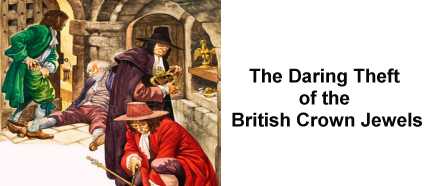
It was in April of 1671 that the self-styled Colonel arrived at the Tower of London, dressed as a Parson and with a female companion posing as his wife. The impostor feigned illness and was offered comfort in the private quarters of the Custodian of the Jewels, a 77-year-old gentleman named Talbot Edward. Over the next few days Blood was able to ingratiate himself with the Edward's and even offered up his imaginary nephew to marry a daughter of the household. A meeting of the young suitor was arranged, the pretense of which provided access for the gang to the Jewel Room whereupon Edward was accosted and covered with a cloak. The plan was going smoothly. Two of the Crown Jewels (St. Edward's Crown and the 'Sceptre within a Cross') were flattened and mangled by the thieves in order that they could be easily spirited out of the well-guarded Tower. The plan was foiled though when the spirited Edward fulfilled his duty and let out a yell of 'Treason! Murder! The crown is stolen!' The gang fled along Tower Wharf before being captured by Captain Beckman, the brother-in-law of one of the younger Edwards. Blood was unrepentant: 'It was a gallant attempt, however unsuccessful! It was for a crown!' To everyone's amazement the charming Colonel Blood was not only pardoned by King Charles II but also given substantial land in Ireland worth 500 pounds a year. Theories still abound regarding the reasons for his lenient treatment. IT'S A LONG WAY TO CONNEMARA 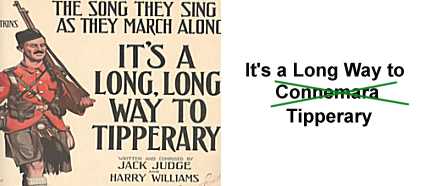
The famous song 'It's a Long Way to Tipperary' was composed by Jack Judge and Harry Williams in the year 1912. On foot of a bet the two Actors met their challenge of composing and performing a song within 24 hours. The original title was 'It's a Long Way to Connemara' but the verse was changed by Judge, much to his companions fury. Williams forgave his friend however, as the change from Connemara to Tipperary had made the song an instant worldwide hit. The tune was widely used by marching troops in the first World War. KIT CAVANAGH AND THE ROYAL DRAGOONS Christian 'Kit' Cavanagh (1667-1739), was the daughter of a wealthy Dublin Brewer who was to achieve fame in British Military circles. Determined to find her husband who had been pressed into military action the gallant lady disguised herself as a soldier and fought with distinction at the Battle of Ramilles against the French in 1706. She served as an Infantryman and later as a Dragoon during which duty she was wounded and her secret discovered. 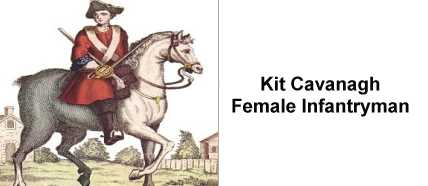
The Writer Marian Broderick noted that 'Amazingly, she managed to do this without being discovered: she ate with them, drank with them, slept with them, played cards with them, even urinated alongside them by using what she describes as a 'silver tube with leather straps'. No one was ever the wiser.' She eventually found her husband after 13 years, recognizing him just as he attempted to pick up a Dutch woman, their relationship now doomed. She eventually returned to Dublin, remarried and traveled widely. THE RUSSIAN SPY AND THE IRISH CHIPPER Perhaps the most famous 'Fish and Chips' restaurant in Ireland, if not the world, is Beshoff's of Dublin. Situated just yards away from the GPO on O'Connell Street and a short walk from Trinity College, a visit to the premises is a Dublin ritual for tourists and locals alike. 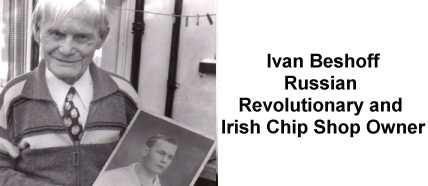
The original owner was Ivan Beshoff who died in 1987, aged 104 years. He was the last surviving participant of the famous 'Mutiny of the Potemkin' in 1905. He arrived in Dublin in 1913 with a letter of introduction from Lenin which he gave to Jim Larkin, the Irish Labour Leader. He was later interred in the Curragh Army prison during the Great War, on suspicion of being a Russian spy. In 1922 he set up the famous eatery which still bears his name to this very day. THE IRISH INVENTOR OF THE EJECTOR SEAT 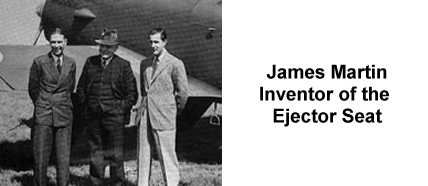 The ejector seat that is such a central feature in so many James Bond and action movies was invented by an Irishman, Sir James Martin (1893-1981).
The ejector seat that is such a central feature in so many James Bond and action movies was invented by an Irishman, Sir James Martin (1893-1981).
Born in County Down in Ulster Martin established an engineering firm in 1929. It is estimated that the ejector seat he designed has been responsible for saving perhaps as many as 5000 lives. ARTHUR MACMURROUGH KAVANAGH Surely one of the most remarkable Irishmen of recent centuries is Arthur MacMurrough Kavanagh (1831-1889). He had been born with severe physical disabilities including having only rudimentary limbs serving as arms and legs. He was essentially armless and legless. 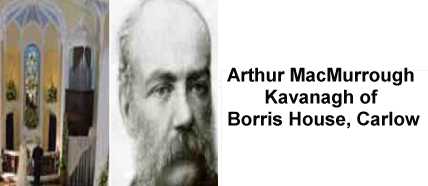
Under the supervision of a caring Doctor, Francis Boxwell, Kavanagh managed to have a fantastic life and career that included horse-riding, fishing, shooting and eventually Politics. He was the son of Thomas Kavanagh of Borris House of County Carlow who also was an Irish politician. He followed the path of his father but not before he had traveled extensively throughout Russia, Sweden, Egypt, Asia, India and beyond. In 1851 he inherited the family estates and married a cousin in 1855, the marriage producing seven children. He served as the High Sheriff of Counties Kilkenny and Carlow and represented Counties Wexford and Carlow in the British Parliament. |

HELP KEEP THIS NEWSLETTER ALIVE!
|
||||

by Mattie Lennon Stone is lasting: all life ends in death, but stone lives on. Michael McLaverty 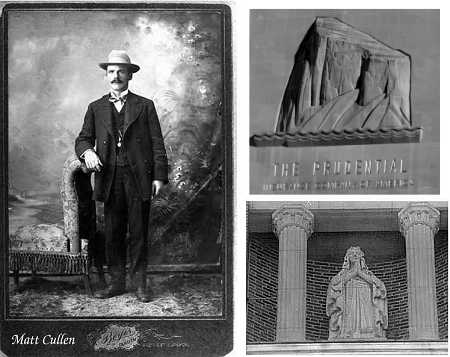
In My father's time... (I'm beginning to sound like the late Eamon Kelly... if only). Anyway, in the early days of the last century there was a Cullen man, in Ballinastocken, who was known as 'LaaBaa'. I've no idea what the nickname means or where it came from. I once asked an old schoolmaster in Lacken, who was into numerology, and he told me that the life path number of LAABAA is 9. The Destiny Number 9 in numerology stands for the ubiquity of the immortal soul and therefore the nine is always surrounded by an aura of mystery and mysticism. Those born with this number will have much success in life. What I do know is that the soubriquet adhered so persistently to Mr Cullen that only those of his own age or older knew what his real first-name was. He is remembered mainly for rhyming-off the names of his four brothers who went to America in the 1890s, 'Lar an' Matt an' Dan an' Pat'. Three of them were stonecutters who learned their trade in Ballyknockan. I was recently contacted by Marge Campbell, in Illinois, a granddaughter of Matt, who is very proud of her Irish ancestry. Laurence Cullen emigrated first and settled in Chicago where he was joined by Matthew and Patrick both of whom worked at Stearns Quarry. In 1901 they both left for Superior, Wisconsin, and joined the William Penn Stone Company. Both brothers married in 1901 at Christ the King Cathedral, Superior. Patrick worked in Vancouver from 1907 to 1911 after which he went to Minneapolis, Minnesota. Mathew also went to Minnesota where he became President of the Minneapolis Stonecutters Union. I wonder did he cut his trade-union teeth before he crossed the Atlantic? There was a prolonged strike in the Ballyknockan quarries in 1901. When it was settled Archbishop Walsh (the 'Billy Walsh' who featured in 'Gas From a Burner' by James Joyce) had a pamphlet distributed congratulating the quarry-owners and the workers on the settlement. Matthew died from typhoid on 16th August 1914 aged 40. His wife had died on 29th January 1914 twenty days after giving birth to twin girls one of whom, Helen, was Marge Campbell's mother. Matthew's brother Dan became guardian of seven orphans. Dan, who was a steamfitter, had his first child with his second wife when he was age 69 and his wife was 46. He died in 1956. Patrick Cullen, who worked on many prestigious projects, including the entrance to Chicago's Shedd Aquarium that can be viewed today, passed his skills on to sons Myles and Bernard. Myles Cullen also carved a statue of the Virgin Mary which is still on display on top of one of the Mayo Clinic buildings in Rochester, Minnesota. Patrick lived until 1947 and his last job was the dog which lies on top of the money box on the F&M Bank. In the 1930s Bernard Cullen carved many well-known faces, included Stalin and Mortimer Snerd, as gargoyles on All Saints Church. He said 'We didn't have pictures of the gargoyles so we were told to carve any face you like and have fun' Surprisingly, for a man with a Wicklow father, Bernard Cullen didn't like granite. He said he preferred to work in 'any good Minnesota limestone'. He carved a piece of the Rock of Gibraltar for the lobby of the Prudential Insurance Company and described the Monolithic limestone as 'An oddball to carve'. Obviously he wouldn't agree with the character in Seamus Murphy's 'Stone Mad' who referred to the Ballyknockan granite as being 'like oatmeal' and commented on how easily carved it was. The Cullen brothers worked on the 20 ton replica of the Great Seal of Minneapolis which was hoisted onto the wall of the Minneapolis Auditorium in the 1960s. The Minneapolis Tribune of 17th February 1967 had a picture of Myles Cullen dwarfed by the Seal, which was 26 feet in diameter. His brother Bernard remarked: 'The Great Seal was so big we had to hire a ballroom so that we could lay it out.' Myles Cullens' sons say their father's work felt normal and common to them when they were young. Every Saturday they would help clean stone dust from a workshop their father and uncle bought, and be rewarded with a soda pop. Today, they say, they are amazed by their father's work. The Westin Hotel, Minneapolis, has two more monuments to the Cullen brothers. They sculpted the larger than life figures of a mechanic and a farmer which stands on either side of the main entrance. The building was formerly the Mechanics' and Farmers' Bank. Laurence Cullens' sons, Patrick and Laurence, were also stonecutters. Patrick was Recording Secretary for Chicago Stonecutters Union. It is no surprise that the men from Ballinastockan passed their crafts on to the next generations. In 'Ballyknockan, a Wicklow Stonecutters' Village' by Seamas O'Maitiu and Barry O'Reilly, we are told that 'Stone cutting is a craft that does not just spring up out of the ground on the discovery of a promising seam of rock. It is passed on from generation to generation and stone cutters have always been willing to follow their trade.' It has been said that if you want something to last forever you should either write a song about it or carve it in stone. Well, the Cullens have left many 'poems-in-stone' in the USA. And wouldn't LaaBaa be proud of his brothers and nephews knowing that it all started with the departure of 'Lar an' Matt an' Dan an' Pat.' |

HELP KEEP THIS NEWSLETTER ALIVE!
|
||||

View the Archive of Irish Phrases here: http://www.ireland-information.com/irishphrases.htm |

The winner was: gorman1963@gmail.com who will receive the following: A Single Family Crest Print (usually US$24.99) Send us an email to claim your print, and well done! Remember that all subscribers to this newsletter are automatically entered into the competition every time. I hope that you have enjoyed this issue! 
by Michael Green, Editor, The Information about Ireland Site. http://www.ireland-information.com Contact us Google+ (C) Copyright - The Information about Ireland Site, 2018. 17 Páirc Ghrainbhil, Carraig Dubh, Contae Baile Átha Cliath, Ireland Tel: 353 1 2893860 |

MARVELOUS GIFTS FOR ANY OCCASION FREE DELIVERY TO YOUR DOOR 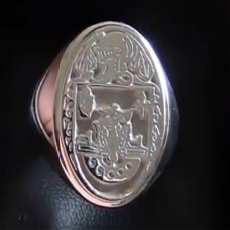
BIG REDUCTIONS! Stunning Family Crest Signet and Seal Rings 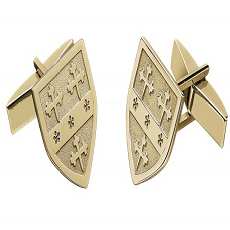
DISCOUNTED FOR A LIMITED TIME Elegant Cufflinks 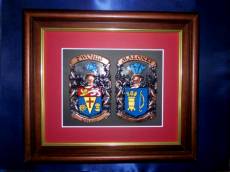
Incredible Family Crest Plaques Made in Ireland 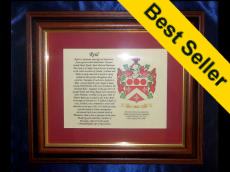
Superior Framed Family Crest Parchments 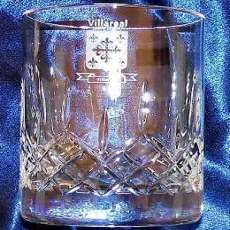
Gorgeous Glistening Galway Crystal 'Your-Name' Old Irish Sign NEW DESIGNS! 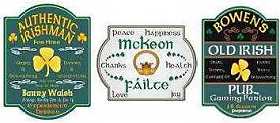
From US$34.99 - Free Delivery 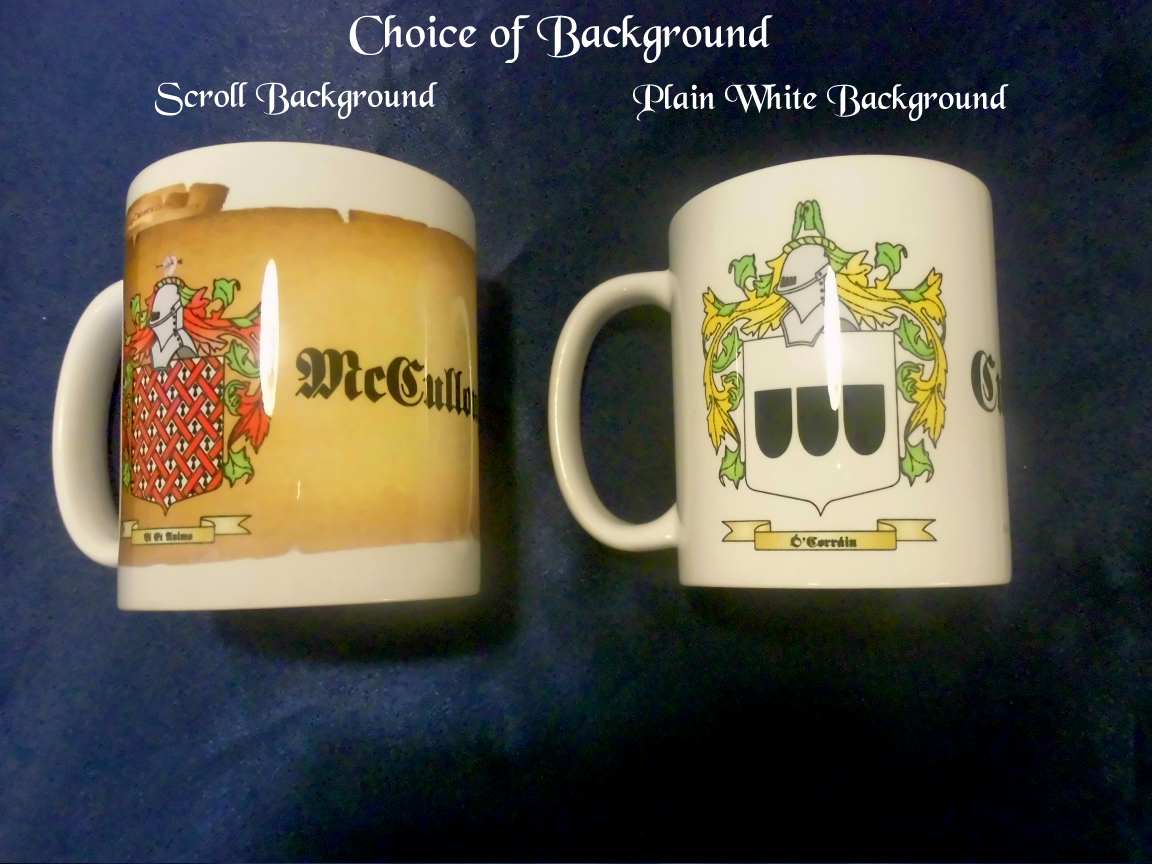
New Designs available on our Coffee Mugs 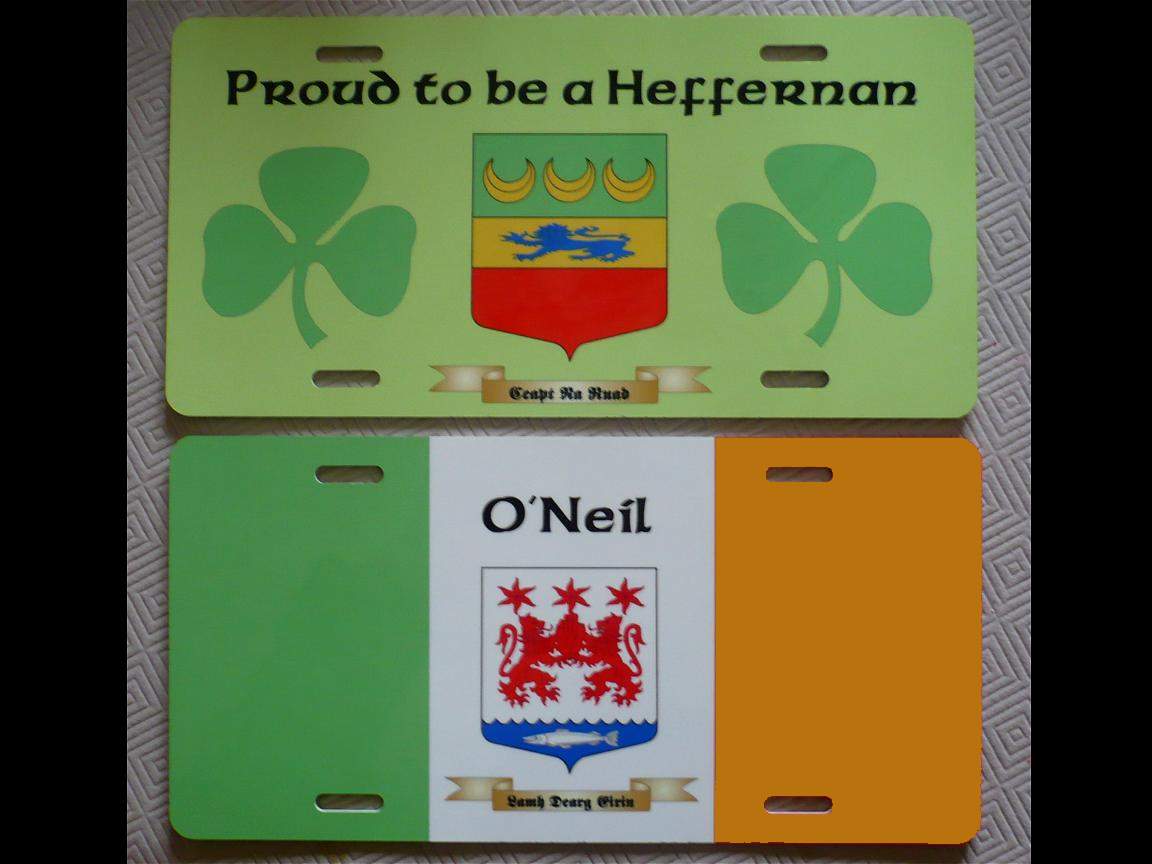
Personalized Licence Plate 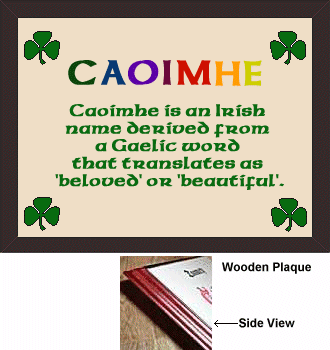
Personalized First Name Plaque. Great for Kids! 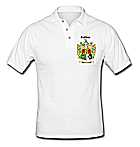
'Your-Name' Polo & Tee Shirts 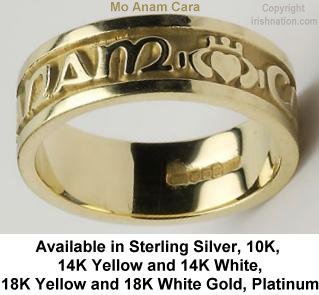
From US$69 Delivered BIG REDUCTIONS! Stunning Engraved Rings from Ireland with Irish Language Phrases. Mo Anam Cara: My Soul Mate Gra Dilseacht Cairdeas: Love, Loyalty, Friendship Gra Go Deo: Love Forever Gra Geal Mo Chroi: Bright Love of my Heart SEE MORE GREAT OFFERS AND DISCOUNTS AT: IRISHNATION.COM FREE DELIVERY FOR A LIMITED TIME! |



